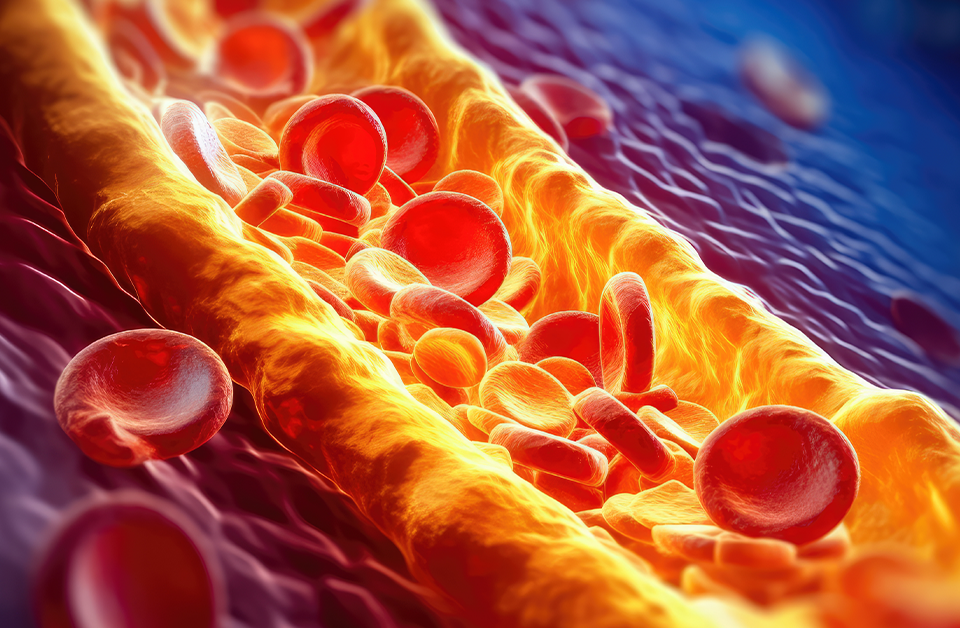

“I’m very fortunate that I was able to achieve everything I wanted with my career, so I retired in 2020 and moved to Florida,” Mitchell recounts. “I used to golf and play tennis, and I walked two miles every day. But recently, I developed painful cramps in my legs, so I can’t do those things anymore. Now, I mostly enjoy the sunshine while lounging beside my pool.”
Despite the slowdown, Mitchell didn’t feel any older when he turned 62 last December. He considered himself to be fairly healthy, even though he was 15 pounds overweight and taking medication to control his high blood pressure and cholesterol. So, he was understandably disturbed when he struck out in the bedroom, not once but twice in a span of three weeks.
“My wife and I were trying to be intimate, and I couldn’t sustain my erection, which ruined everything,” Mitchell bemoans. “I was horrified, but my wife was very understanding. She tried to reassure me by saying, It happens to a lot of men. It’s probably just stress. We’ll try again another time.”
After the second failure, Mitchell sought advice from his primary care physician. The doctor performed a physical exam. The doctor noted that Mitchell’s blood pressure was elevated despite the medication, and his legs felt cool to the touch. The doctor referred him to St. Luke Heart Institute in Brooksville for further evaluation.
At the institute, which provides all aspects of cardiovascular care and also treats venous disease, Mitchell met with Thomas Mathews, MD, FACC, a fellowship-trained interventional cardiologist.
Dr. Mathews performed a thorough assessment and ran several diagnostic tests. He discovered that Mitchell was suffering from peripheral vascular disease, a disorder of the circulation outside of the heart that leads to erectile dysfunction (ED), which is the inability to get and maintain an erection suitable for sexual activity.
Plaque Buildup
“Peripheral vascular disease means there are blockages in the arteries that supply blood to the legs and pelvic region,” Dr. Mathews defines. “It also blocks the arteries that supply blood to the male sex organs. So, vascular disease is one of the main causes of ED.”
The blockages are the result of plaque buildup in the arteries, a condition called atherosclerosis. Plaque interferes with the blood flow to the male sex organs. It also decreases the amount of oxygen and nutrients reaching those tissues. Blood clots may form on the artery walls, further decreasing the width of the artery and resulting in a blockage.
“The first sign that a man has a vascular problem is he starts experiencing ED with cramps and numbness in his buttocks and legs,” Dr. Mathews observes. “He may experience a decrease in his skin temperature, a burning or aching pain in his legs, and numbness, weakness or heaviness in his leg muscles.”
“The laser treatment worked wonders. The ED is gone, and I have a very healthy sex life now.” – Mitchell
Risk factors for peripheral vascular disease include having coronary artery disease, diabetes, high blood pressure and high cholesterol. Being overweight, physically inactive and smoking are other risk factors.
“If a man has ED, he very likely also has blockages in the coronary arteries supplying his heart. It is essentially the same disease,” Dr. Mathews reveals. “Blood is not freely flowing through the arteries, so symptoms occur. Coronary artery disease typically causes a tightness or pressure in the chest, called angina, as well as shortness of breath.”
At St. Luke Heart Institute, patients complaining of ED receive a complete cardiovascular evaluation to look for blockages — particularly in the coronary arteries — that could lead to complications.
“We do not simply treat the immediate problem, the ED,” Dr. Mathews confirms. “We evaluate all aspects of vascular disease, which can ultimately uncover blockages in the coronary arteries. Then we can treat those blockages to prevent heart attacks, strokes
and even death.”
Dr. Mathews offers advanced technologies and interventional procedures to eliminate blockages in the arteries supplying the male sex organs and restore healthy blood flow. Among the treatments is rotoablation, also called rotational atherectomy, which works like a plumber’s snake to carve through the blockage. Another is balloon angioplasty, during which a balloon is inserted through a catheter and inflated to open the narrowed artery.
The procedure Dr. Mathews chose for Mitchell was laser angioplasty.
“During laser angioplasty, we insert a small catheter through an IV in the groin and thread it through the circulatory system toward the blockage,” the doctor explains. “First, we create images of the plaque with a camera inserted into the catheter. The technique is called intravascular ultrasound. We then use a laser to vaporize the blockage in the blood vessel.
“The laser breaks up the plaque into very minute particles, about the size of blood cells. Those tiny particles travel through the bloodstream to the liver, which processes and ultimately eliminates them from the body.
“Laser angioplasty is the most advanced treatment we offer. It is also a gentle method of opening up a blockage. It is not painful and is performed under conscious sedation. Patients are a little groggy but feel nothing during the procedure, which takes about 30 minutes. Patients are told to take it easy that day, but they can return to normal activities the following day.”
“Worked Wonders”
Once Dr. Mathews opened up Mitchell’s blocked blood vessels with laser angioplasty, blood flow through the arteries that feed his sex organs improved dramatically. He noticed a difference in his performance in the bedroom right away.
“The laser treatment worked wonders,” Mitchell enthuses. “The ED is gone, and I have a very healthy sex life now. I feel relieved, and my wife is delighted. The intimacy is back in our relationship, which is still going strong after 37 years of marriage.
“Dr. Mathews is extremely knowledgeable and a very caring doctor. He made me feel very comfortable talking about an embarrassing problem, which he ultimately corrected. I highly recommend him and St. Luke Heart Institute to any man having problems with erectile dysfunction.”
Minimally Invasive Procedures Seal Leaking Leg Veins
St. Luke Heart Institute offers minimally invasive therapies for the treatment of venous insufficiency, a condition in which the valves in leg veins are so damaged that blood cannot ow to the heart efficiently.
“Many people who experience leg swelling or numbness are misdiagnosed as having congestive heart failure or neuropathy when they really have venous insufficiency,” Dr. Mathews explains. “The leg veins are compromised and leak, causing swelling and pain, as well as spider or varicose veins.
“To seal the nonfunctioning leg veins and keep them from leaking, we often use a procedure called radiofrequency ablation. This procedure is performed through a tiny puncture in the skin, through which radiofrequency energy is applied to the diseased vein to close it.
“In other cases, we use an FDA-approved microfoam that is injected into the vein. It treats the vein wall and collapses the vein. In either case, blood fl ow is rerouted from the compromised veins to healthy ones.”
* Patient’s name changed at his request








